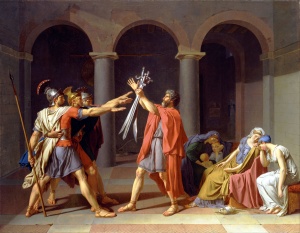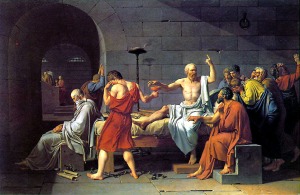This up and coming spring break, I am going to Mexico for the entire week and a half. I have never been before, and I don’t really know much about the country itself. So naturally, when we were given the option the choose a country, I decided to choose Mexico. I feel like I should know something about where I am going, and why not it’s spectacular art! I chose a few artists that I found to have beautiful works of art and which had a great meaning behind them. My ultimate theme is works of art from Mexican artists between the years of 1910 and 1950.

The first artist I chose was Diego Rivera. Rivera actaually has an incredibly long name, which is Diego maria de la Concepcion Juan Nepomuceno Estanislao de la Rivera y Barrientos Acosta y Rodriguez. Quite the mouthful! He was born on December 8, 1886 in Guanajuato, mexico, and was married to Frida Kahlo in 1929. Rivera is most known for his paintings and murals. Rivera was apart of the Mexican Mural Movement between 1922 and 1953. The piece I chose by Rivera is called La Mujer del Pozo, which was created in 1913. The painting is an oil painting on canvas. The painting is a mix of abstract art and Aztec imagery. The way that everything seems off in the painting truly adds to it, along with the sullen woman on the right. Rivera used a cubist technique to invoke emotions from his audience. Rivera has always been credited for procuring emotions from his audience for his paintings, because he was not afraid to speak his mind. Rivera was a known atheist, and usually ignored the criticism he avhieved from many of his works. I personally really enjoy the painting because it seems so random. The shapes create a picture if you look at it as a whole, but if you look at it differently, it is made up of little chunks all over the paper. Every different piece seems random, but they work together to achieve one unified painting. I really liked his painting, and all of his other ones that I looked at.
_de_Jos%C3%A9_Clemente_Orozco_en_Pomona_College.jpg)
The next artist I chose was Jose Clemente Orozco. Orozco was born on Novermber 23, 1883 in Ciudad Guzman, Mexico. Orozco was most known for his paintings and murals. He was apart of the Mexican Mural Movement and the Social Realism Movement. Orozco was the most complex artist from the Mexican Mural Renaissance, because he liked the theme of human suffering, was not realistic, and really liked machines. Orozco was mainly influenced by Symbolism, which influenced his murals across the country between the years of 1922 and 1948. He was very politically driven, and often helped to promote peasants and workers. One interesting fact about Orozco is that he lost his left hand at the age of 21 because he was working with gunpowder to make fireworks. The piece I chose by Orozco is his first mural in the United States. The work of art is called Prometheus, and was painted at Pomona College in California in the year 1930. The mural shows his beliefs that all of the events in history are in a never ending circular sequence. The mural is gorgeous with one strong man taking up the majority of the paintign. He seems to be reaching towards the sky/ceiling. Behind the man are a bunch of people that are raising their joined hands to the sky. The painting is a half circle on the wall. I personally love how the painting is very serious and colorful. There are random bits of the color purple on the top and the bottom two corners. It truly makes the painting pop and look very classy. This is by far my favorite painting from this time period and country.

The final artist that I chose was David Alfaro Siqueiros. Siqueiros was born on December 29, 1896 in Carmargo, Chihuahua. He was most known as a mexican social realist painter and for his murals. Siqueiros was also apart of the mexican Communist Party, and in 1940 he attempted to assassinate Leon Trotsky. In 1966, Siqueiros was awarded the Lenin Peace Prize. Along with the other chosen artists, he Siqueiros was apart of the Mexican Mural Movement and the Social Realism Movement. The work of art that I chose from Siqueiros is called The Child Mother and was created in 1936. The painting shows what looks like a girl aged around 10 carrying a baby that looks around 10 months old. The style of the painting is social realism, and the technique was pyroxylin. The painting currently sits in the Santa Barbara Museum of Art. I personally enjoy this painting because it showcases the hard times during this era. This painting is showing an insanely young child taking care of another child. This is beyond crazy, and this painting only shows the flaws of the time. I also like that all of the background colors are brown and murky, while the two children are lit up in white clothing.
These were my three favorite paintings from my three favorite artists of this Mexcan era. Hope you enjoyed them as much as I did. I now feel as if I will understand more of the culture and art when I visit Mexico later in the year!
References:
“Diego Rivera.” Wikipedia. Wikimedia Foundation, 19 Nov. 2014. Viewed on November 21, 2014. http://en.wikipedia.org/wiki/Diego_Rivera\.
“Jose Clemente Orozco 1883-1949.” WFU. Viewed on November 21, 2014. http://www.wfu.edu/history/StudentWork/fysprojects/kmason/Orozco.htm.
“La Mujer del Pozo.” Totally History. 2012. Viewed on November 21, 2014. http://totallyhistory.com/la-mujer-del-pozo/
“David Alfaro Siqueiros (Mexican, 1998-1974).” Heritage Gallery. 2010. Viewed on November 21, 2014. http://www.heritagegallery.com/david-alfaro-siqueiros.html














